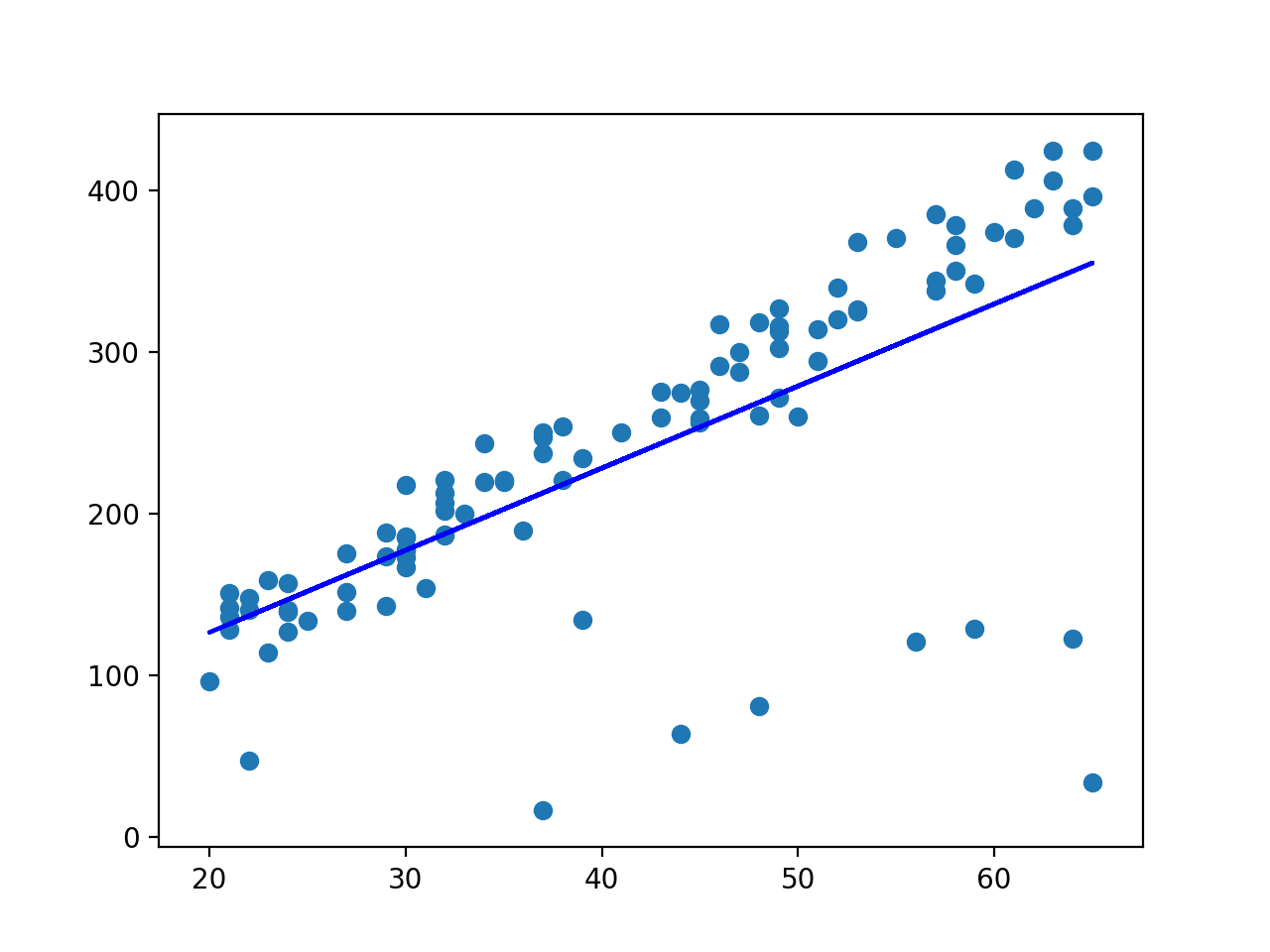

#!/usr/bin/python import random import numpy import matplotlib.pyplot as plt import pickle from outlier_cleaner import outlierCleaner from sklearn.linear_model import LinearRegression ### load up some practice data with outliers in it ages = pickle.load( open("practice_outliers_ages.pkl", "r") ) net_worths = pickle.load( open("practice_outliers_net_worths.pkl", "r") ) ### ages and net_worths need to be reshaped into 2D numpy arrays ### second argument of reshape command is a tuple of integers: (n_rows, n_columns) ### by convention, n_rows is the number of data points ### and n_columns is the number of features ages = numpy.reshape( numpy.array(ages), (len(ages), 1)) net_worths = numpy.reshape( numpy.array(net_worths), (len(net_worths), 1)) from sklearn.model_selection import train_test_split ages_train, ages_test, net_worths_train, net_worths_test = train_test_split(ages, net_worths, test_size=0.1, random_state=42) ### fill in a regression here! Name the regression object reg so that ### the plotting code below works, and you can see what your regression looks like reg = LinearRegression().fit(ages_train, net_worths_train) print('score', reg.score(ages_test, net_worths_test)) print('slope', reg.coef_) try: plt.plot(ages, reg.predict(ages), color="blue") except NameError: pass plt.scatter(ages, net_worths) plt.show() ### identify and remove the most outlier-y points cleaned_data = [] try: predictions = reg.predict(ages_train) cleaned_data = outlierCleaner( predictions, ages_train, net_worths_train ) except NameError: print "your regression object doesn't exist, or isn't name reg" print "can't make predictions to use in identifying outliers" ### only run this code if cleaned_data is returning data if len(cleaned_data) > 0: ages, net_worths, errors = zip(*cleaned_data) ages = numpy.reshape( numpy.array(ages), (len(ages), 1)) net_worths = numpy.reshape( numpy.array(net_worths), (len(net_worths), 1)) ### refit your cleaned data! try: reg.fit(ages, net_worths) print('new slope', reg.coef_) print('new score', reg.score(ages_test, net_worths_test)) plt.plot(ages, reg.predict(ages), color="red") except NameError: print "you don't seem to have regression imported/created," print " or else your regression object isn't named reg" print " either way, only draw the scatter plot of the cleaned data" plt.scatter(ages, net_worths) plt.xlabel("ages") plt.ylabel("net worths") plt.show() else: print "outlierCleaner() is returning an empty list, no refitting to be done"
#!/usr/bin/python import math def outlierCleaner(predictions, ages, net_worths): """ Clean away the 10% of points that have the largest residual errors (difference between the prediction and the actual net worth). Return a list of tuples named cleaned_data where each tuple is of the form (age, net_worth, error). """ cleaned_data = [] total = int(len(predictions)*0.9) ### your code goes here for i in range(len(predictions)): tuple = (ages[i][0], net_worths[i][0], math.fabs(predictions[i][0] - net_worths[i][0])) cleaned_data.append(tuple) cleaned_data.sort(key=error_aesc_sort) return cleaned_data[:total] def error_aesc_sort(e): return e[2]
('score', 0.8782624703664675)
('slope', array([[5.07793064]]))
('new slope', array([[6.36859481]]))
('new score', 0.983189455395532)